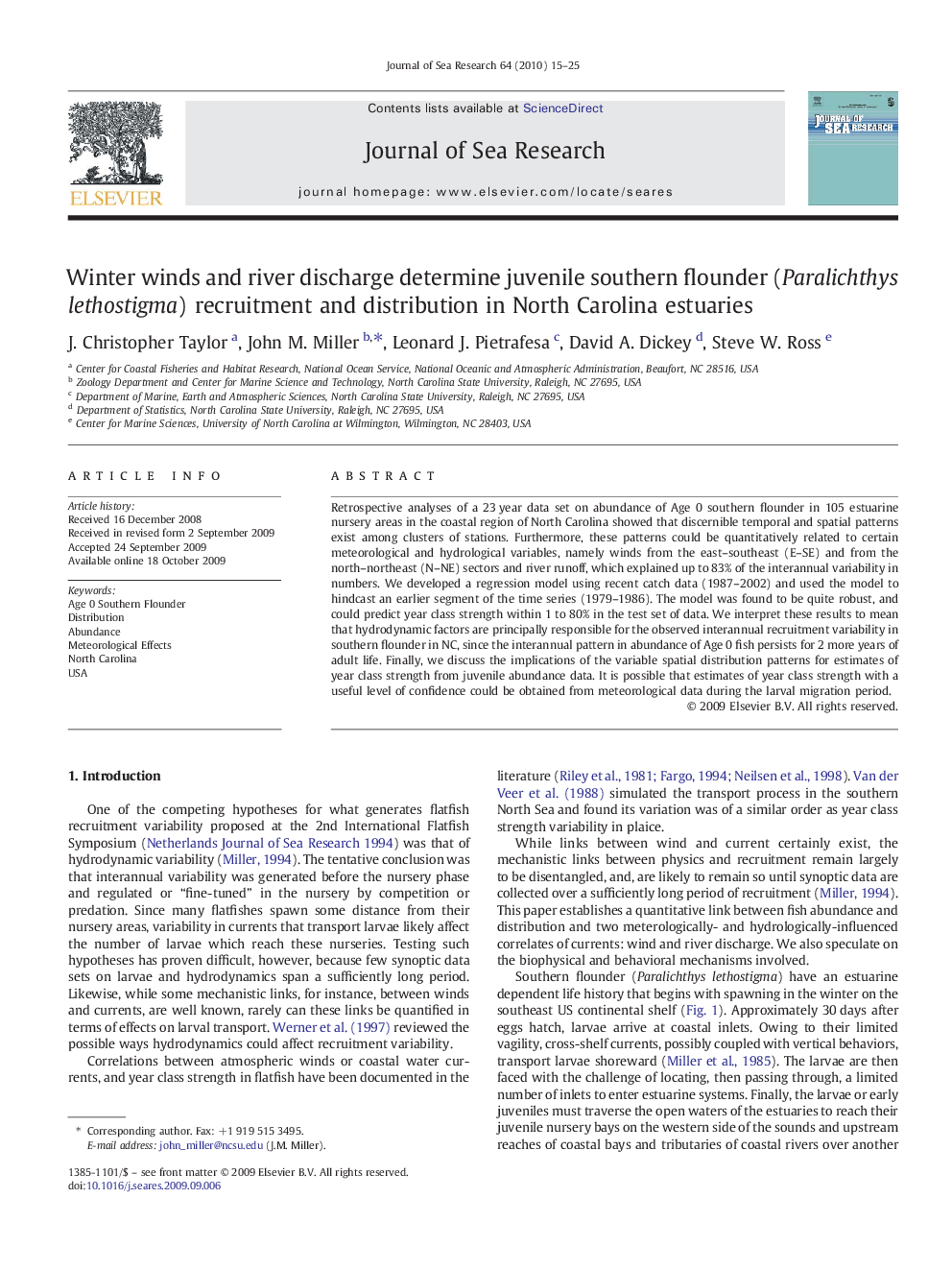| Article ID | Journal | Published Year | Pages | File Type |
|---|---|---|---|---|
| 4550125 | Journal of Sea Research | 2010 | 11 Pages |
Abstract
Retrospective analyses of a 23Â year data set on abundance of Age 0 southern flounder in 105 estuarine nursery areas in the coastal region of North Carolina showed that discernible temporal and spatial patterns exist among clusters of stations. Furthermore, these patterns could be quantitatively related to certain meteorological and hydrological variables, namely winds from the east-southeast (E-SE) and from the north-northeast (N-NE) sectors and river runoff, which explained up to 83% of the interannual variability in numbers. We developed a regression model using recent catch data (1987-2002) and used the model to hindcast an earlier segment of the time series (1979-1986). The model was found to be quite robust, and could predict year class strength within 1 to 80% in the test set of data. We interpret these results to mean that hydrodynamic factors are principally responsible for the observed interannual recruitment variability in southern flounder in NC, since the interannual pattern in abundance of Age 0 fish persists for 2 more years of adult life. Finally, we discuss the implications of the variable spatial distribution patterns for estimates of year class strength from juvenile abundance data. It is possible that estimates of year class strength with a useful level of confidence could be obtained from meteorological data during the larval migration period.
Related Topics
Physical Sciences and Engineering
Earth and Planetary Sciences
Oceanography
Authors
J. Christopher Taylor, John M. Miller, Leonard J. Pietrafesa, David A. Dickey, Steve W. Ross,
